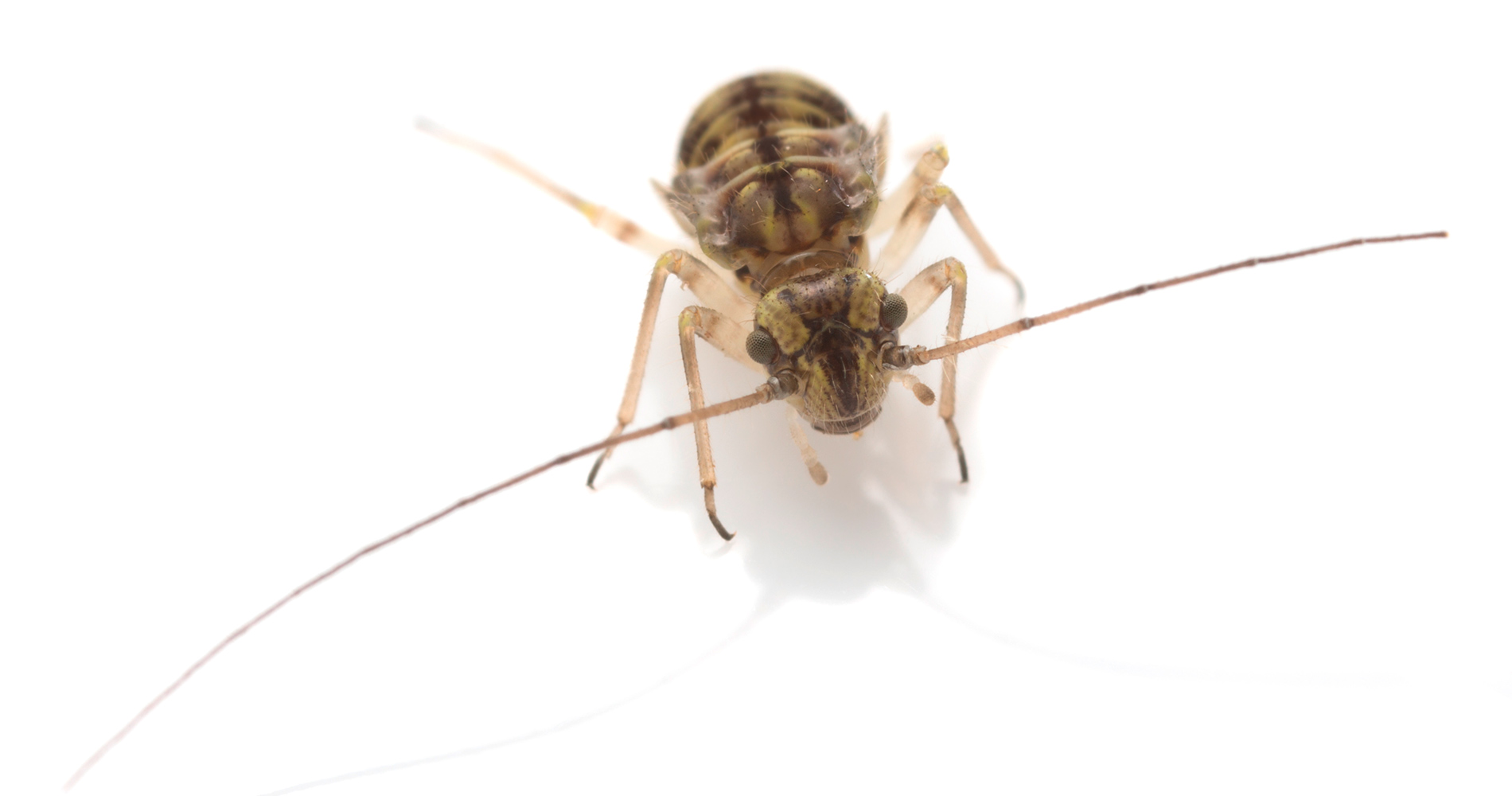Book louse
(Trogium pulsatorium and other types)

Biology:
Book lice are lively, hemimetabolous insects, which are approximately 1 to 2 mm long. Some types have fully developed wings, whereas on other types, these are smaller or are not present at all. They vary from pale yellow to a dark colour. Unlike head lice, book lice do not draw blood; instead, they feed on barely visible stretches of mould which occur in environments which are too damp. As a result, they are only found in rooms with a high level of humidity and you often see them between books, on cereal-based foods, on light wallpapers, etc.
Damage:
In rooms with a high level of humidity, book lice cause damage in the form of scraping on paper goods, such as books, files and wallpapers, when they graze on invisible stretches of mould. This results in fine paper dust, as well as staining caused by faeces and skin remnants which have been shed. You can often find large numbers of them on stale food and drugs which have been stored in larders in conditions which are too damp. When new-build dwellings have been freshly wallpapered but not allowed to dry out sufficiently, this can often lead to the mass reproduction of the lice.
Tip:
You can combat these harmless insects relatively easily by ensuring that your home is properly heated and ventilated, as they are reliant on high levels of humidity.
